Tom's Guide Verdict
The LG Watch Sport, the first smartwatch to run Android Wear 2.0, has built-in LTE and GPS and a big, bright display, but it’s too bulky for most people.
Pros
- +
Always-on display
- +
Built-in LTE, GPS
- +
Good app selection,Android Pay
Cons
- -
Can’t swap bands
- -
Very bulky
- -
Short battery life
- -
Limited workout features
Why you can trust Tom's Guide
Can a device have everything but still not be enough? As the marquee watch for Android Wear 2.0, the LG Watch Sport includes as many features as the company could cram into the device. Chief among them are a great display, GPS, Android Pay and LTE, the latter of which lets you use almost every feature of the smartwatch even if it’s not tethered to your phone. Android Wear 2.0 is easier to use, and lets you download apps straight to the watch.
So why am I so unenthused about the Watch Sport? For starters, it’s too bulky for all but the largest wrists, its workout features need work and its battery life is too short.
Design
I thought I had become accustomed to the hulking designs that define most smartwatches, but then along came the LG Watch Sport. This is not a small watch. I immediately noticed its 3.15-ounce heft when I strapped it on my wrist. It’s also very thick, at 0.6 inches, and it constantly got caught on my shirt cuffs. I had to roll up my sleeves just to tell the time.
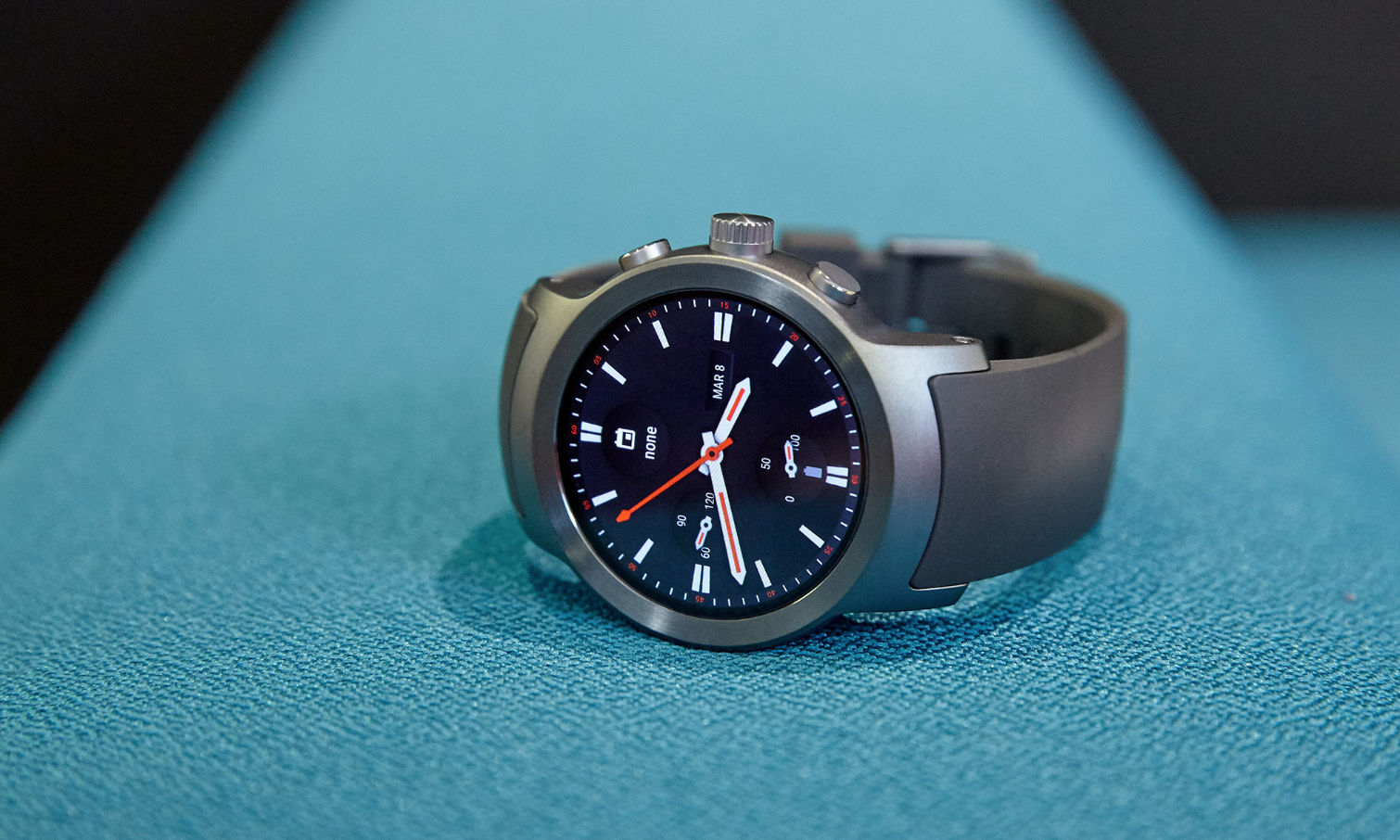
Adding to the bulk is the watchband itself. Because some of the watch’s antennas are embedded in the band, the band is not only thick but much less flexible and more uncomfortable, especially for people with smaller wrists. It’s nearly as ill-fitting as the original Microsoft Band. Making things even worse, you can’t remove the band as you can with other smartwatches.
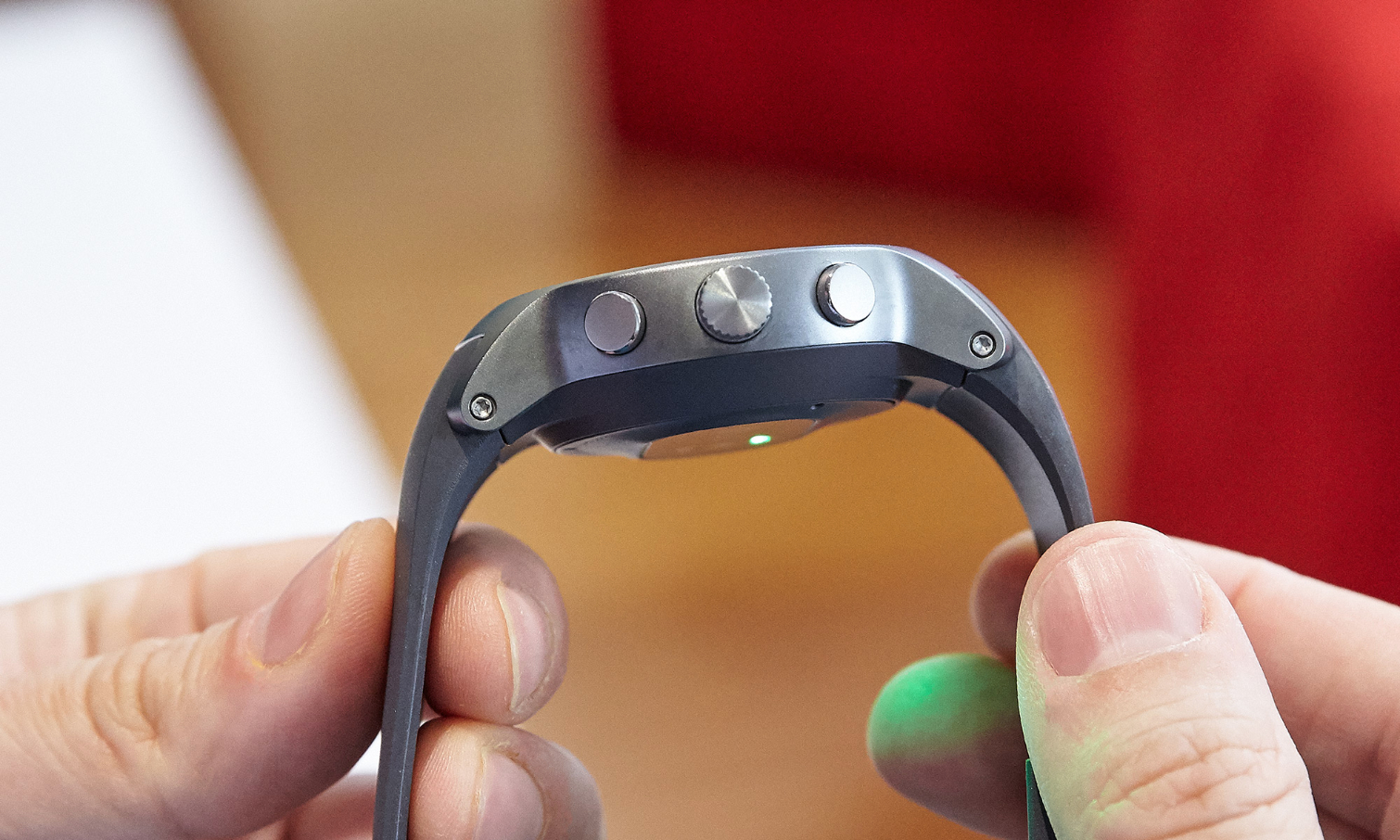
The Watch Sport is so bulky, it made the Samsung Gear S3 Frontier— which weighs 3 ounces and is half an inch thick — feel like a friendship bracelet by comparison.
On the right side of the Watch Sport are three buttons: a digital crown in the middle, which lets you scroll through menus and select items, and two smaller, customizable action buttons (one on each side of the crown).
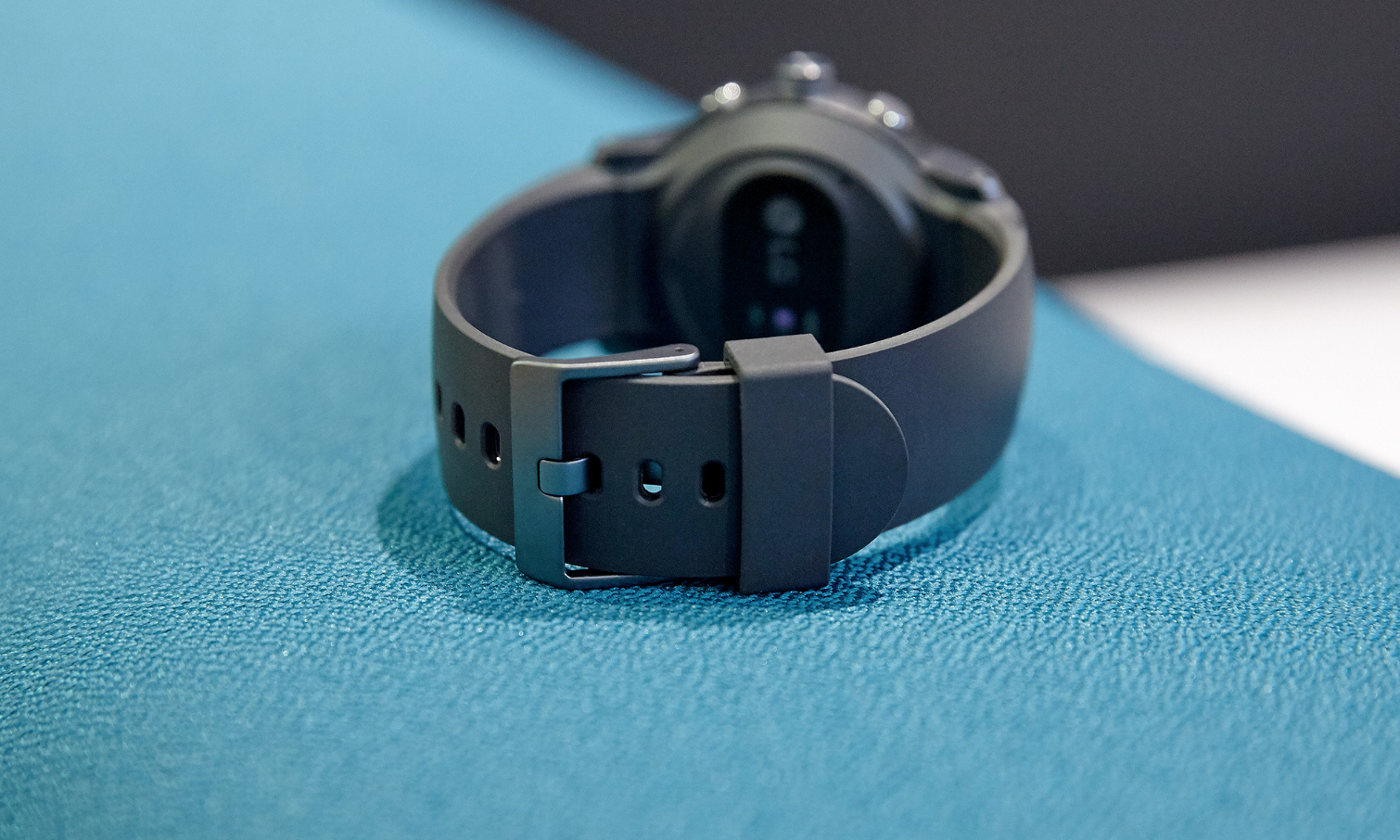
But that doesn’t mean I don’t like the look of the watch. Its face has clean lines, with the beveling on the digital crown providing a nice little accent. In some ways, I prefer the Watch Sport’s design to that of the Samsung Gear S3 Frontier, whose rotating bezel looks a bit too gear-like.
Get instant access to breaking news, the hottest reviews, great deals and helpful tips.
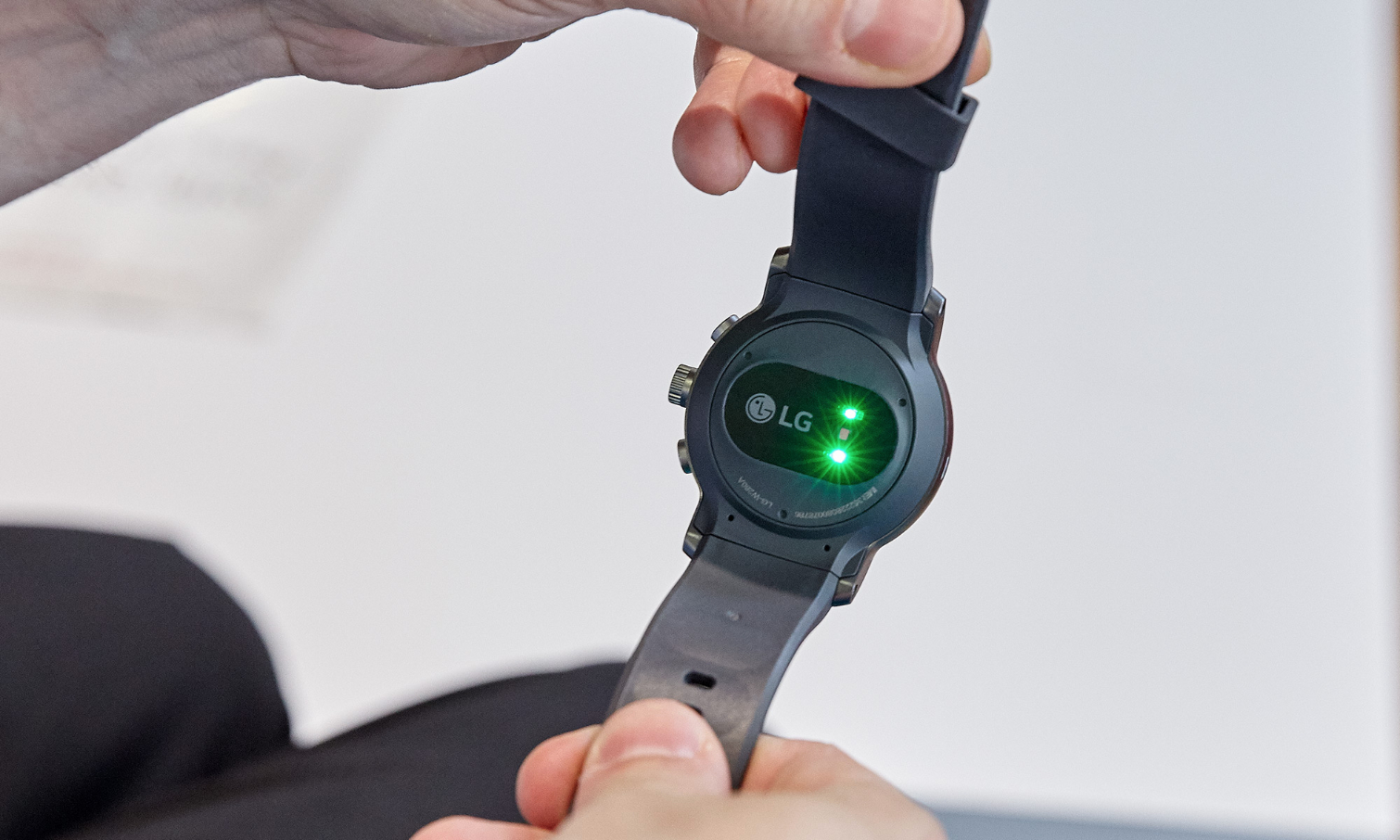
Like the S3 Frontier, the Watch Sport is IP68 rated to withstand being submerged in 1.5 meters (about 5 feet) of water for up to 30 minutes. The Apple Watch Series 2, however, can go more than 30 times as deep —164 feet (50 m).
Display
One advantage of a big watch is a large watch face. The Watch Sport’s 1.38-inch P-OLED display is bright and easy to read, and its resolution of 480 x 480 pixels made everything look crisp. Its screen is larger and sharper than that on the Samsung Gear S3 (1.3 inches, 360 x 360 Super AMOLED), but chances are, you won’t notice much difference between the two.
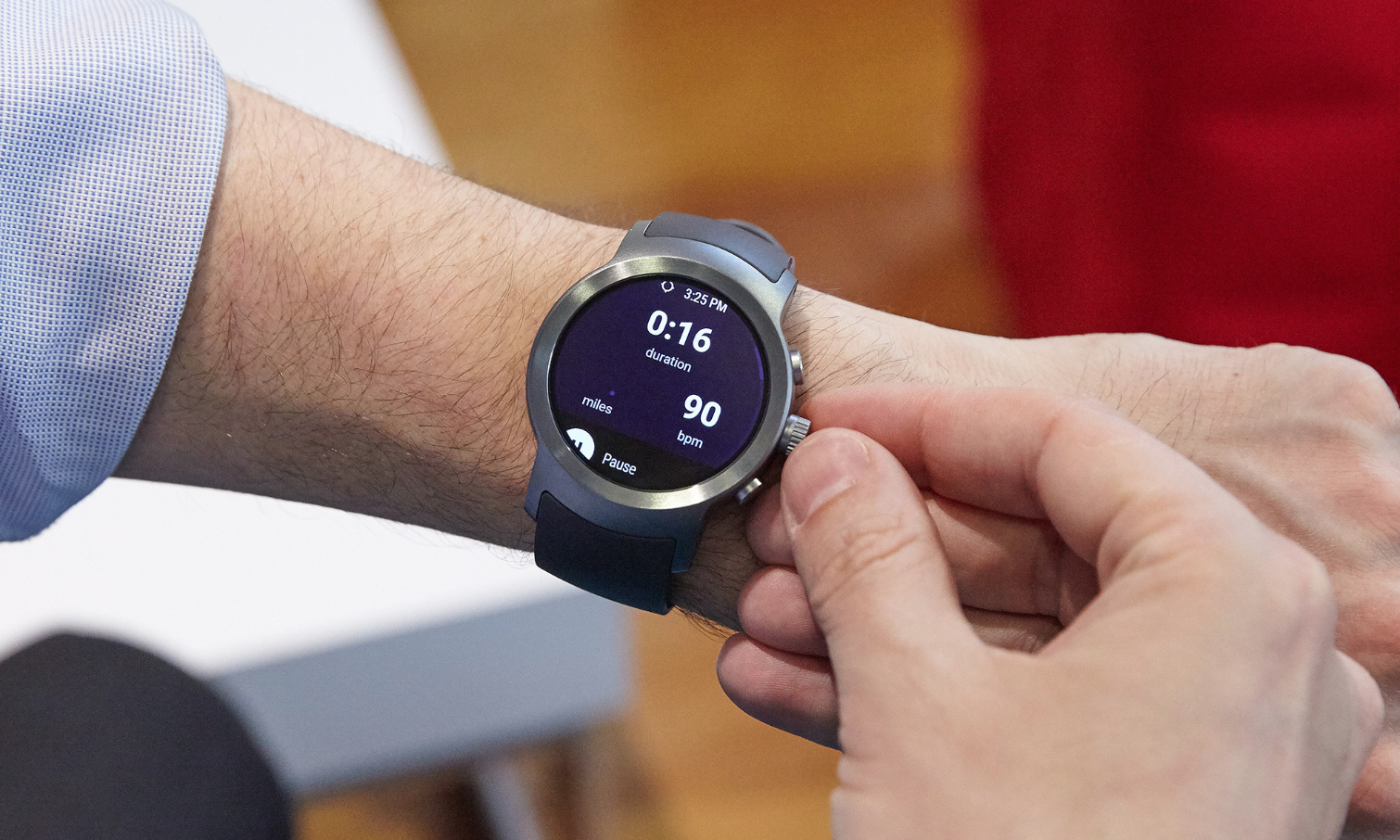
Always-on watch faces, such as the Sport’s, let you avoid conspicuously flicking your wrist to check the time, which is great if you don’t want to admit to others that the meeting you’re in is boring.
Cleverly, each watch face has a “minimalist” view that still gives you all of the information you need, such as the time, while drawing less power. When you activate the screen (by moving your wrist), the face comes to life, and extra details (such as a ticking second hand) are added.
Android Wear 2.0
The Watch Sport is the first smartwatch to feature Android Wear 2.0, the long-awaited update to Google’s wrist-based operating system. Although I like most of the improvements, I’m still not a fan of Android Wear’s card-based interface.
One of the first things you’ll notice about Android Wear 2.0 is that there are a lot more watch faces and many more ways to personalize them, such as changing their colors, hands or the information shown on the subdials.
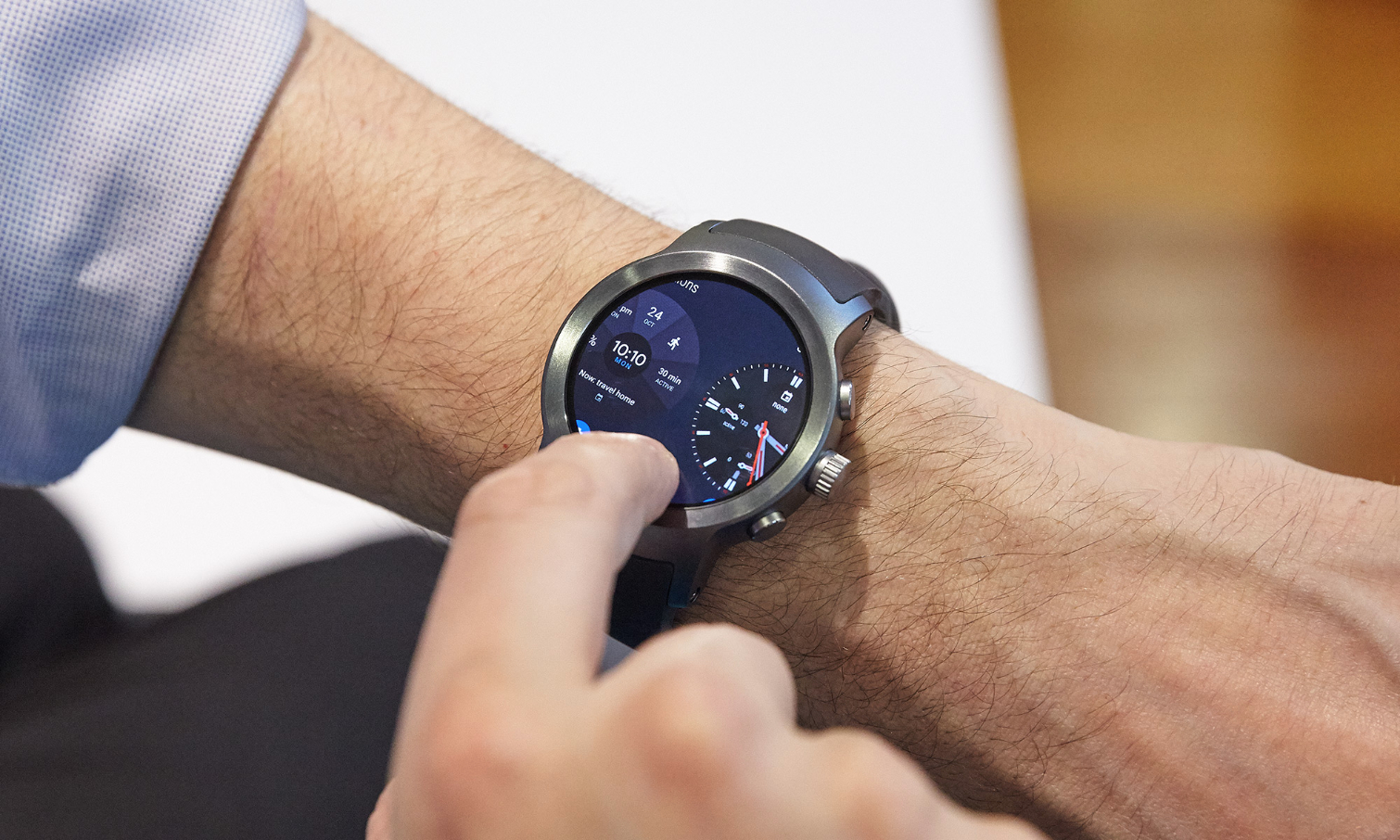
It’s now even easier to switch among watch faces: Simply swipe right or left. Though Google says this makes Android Wear more suitable for going from business to leisure time, I found that it switched almost too easily; it would switch faces accidentally when I was trying to swipe away a card.
A swipe up from the bottom brings up Android Wear’s cards, which include notifications about apps that have been installed, emails, text messages, traffic alerts and more. Tapping on a card lets you perform additional actions, such as replying to an email, while swiping right will remove that card.

Android Wear 2.0 also gives you a few different ways to respond to messages. First, there are smart replies, which are one- or multi-word phrases, such as “OK,” “Yes” or “I’m on my way.” (You can also create a custom response.) You can dictate a response by pressing the microphone button and speaking into the watch a feature that’s useful if you’re driving or doing other things in which you can’t use your hands.
Another fun way to respond is by drawing a smiley face (or any other emoji) and then selecting from the options that appear. The last, and most tedious, way to reply is by pecking out a response using the on-screen keyboard. Predictive typing helps somewhat, and you can swipe to write words, but this should be a last-resort method.
New to Android Wear 2.0 is the ability to install apps directly on the watch itself, rather than relying on a smartphone connection.
Android Wear is still pretty much useless for iPhone owners. That’s because there’s no way to install apps if you can’t download them directly to the watch itself. For example, although you can read and respond to email messages, you can only see that you got a Facebook notification or text message; you can’t respond to either.
Google Assistant
Thanks to Amazon’s Alexa and Apple’s Siri, voice assistants are becoming ubiquitous — not just for phones but also nearly every other gadget. Not surprisingly, Android Wear uses Google Assistant.
The microphone in the Watch Sport ably picked up my voice when I spoke the magic words “OK Google…” and was able to look up everything from restaurants near me to directions home. It even understood contextual questions: I asked about a place to eat, and then I followed up with, “What about Italian?” and the watch returned a local eatery.
However, when I asked, “What movies are playing near me?” it merely brought up a web link to AMC theaters.
Apps
Also new to Android Wear 2.0 is the ability to install apps directly on the watch itself, rather than relying on a smartphone connection. If you’re an iPhone owner who happens to like Android Wear, this is your only option to get apps for the watch.
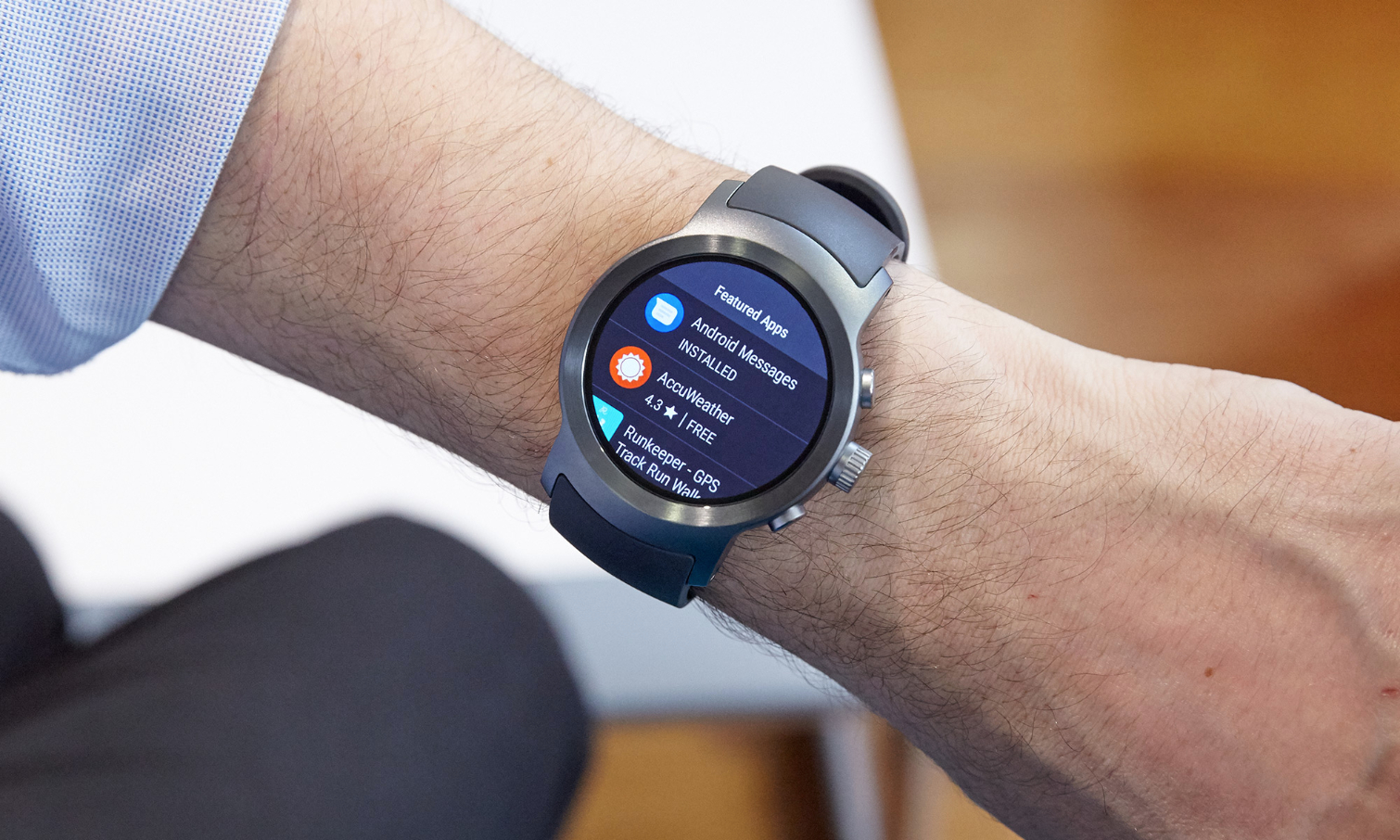
Currently, the number of stand-alone apps is small, and the selection is poorly organized. For example, within the Health and Fitness category, there were only seven apps listed, but when I scrolled through the All Apps list, I found several other fitness-related apps. Confusingly, there were a lot of watch faces in the All Apps category, even though there’s a separate All Watch Faces category.
If you’re a runner who’s thinking of getting the LG Watch Sport to track your workouts, look elsewhere.
Android smartphone owners can also install Android Wear apps via their phone. Here, there are several thousand apps — far more than Samsung’s paltry selection, but far fewer than the 20,000 apps available for the Apple Watch.
Fitness Features and Performance
If you’re a runner who’s thinking of getting the LG Watch Sport to track your workouts, look elsewhere. Although I liked that the watch was quick to acquire a GPS signal — it took about 30 seconds — I was nonplussed by just about every other feature.

For starters, the Google Fit watch app is inadequate. It doesn’t alert you after every mile (or kilometer), even though the smartphone app has this feature. By default, it shows distance, duration and pace, though you can change these to display heart rate, calories, steps or the time.
You can change the display only after you’ve started a workout, but at least your settings are preserved for future runs. I was also annoyed to find that I couldn’t look up my workout history on the watch; you have to go to your smartphone for that.
There are only a handful of third-party running apps. Of those, Runtastic is one of the most established, but that app accesses only the heart-rate monitor, not GPS. MapMyRun uses neither the heart-rate monitor nor GPS.
4G LTE
To me, a smartwatch makes sense only if you can use it out of range of your smartphone while retaining nearly all of the same functionality. Though the LTE radio in the Watch Sport definitely adds to its bulk, it was nice to know that I was still connected, no matter where my phone was.
As with the Samsung Gear S3 Frontier, you can set the Sport’s phone number to be the same as your smartphone’s, so that you won’t miss a call if you don’t have your phone with you.The service is available only through AT&T, where it’s called NumberSync, and Verizon, which dubs this feature Message+.
Plans and Pricing
If you purchase the Watch Sport through Google, it will cost $349.
On Verizon, the Watch Sport costs $329 with a two-year contract, or $379 without a contract. If you’re an existing Verizon customer, you can add it as an additional line for $5 per month.
AT&T is selling the Watch Sport for $249 with a two-year contract, but you’ll also need to pay a $45 activation fee and then $10 per month.
Battery Life
My biggest issue with this (and every) Android Wear watch is that you get one day of battery life at most before that cool-looking smartwatch becomes a useless hunk of metal on your wrist.
The LG Sport Watch has a 430-mAh battery, which offers more power than the 380-mAh battery in the Gear S3 Frontier, but the larger capacity did not translate to increased longevity.
I donned a fully charged Sport at 5:30 p.m., and except for when I slept (and had the screen turned off), I kept the watch on my wrist, where it received notifications from email, Facebook, and calendar invites, but not much else. By 3 p.m. the next day, it was down to 24 percent.
It then took 2 hours to fully recharge the watch.
LG Sport’s charger has dimensions similar to the chargers from Motorola and other Android Wear smartwatches. The LG Sport’s charger measures 1.9 inches in diameter and stands 2.6 inches tall. Although it lets the Watch Sport stand vertically — and allows you to use it as a bedside clock of sorts — it’s very bulky. If you have to travel for a few days, it’s yet another thing to pack.
As with other smartwatches, GPS puts a big hurt on battery life; a 30-minute run drained the Sport by 12 percent.
Bottom Line
If LG and Google were hoping the Sport Watch or Android Wear 2.0 would make smartwatches must-have devices, then they’re going to be sorely disappointed. Apart from some cosmetic changes, there’s nothing that makes the watch, or the operating system, compelling enough to wear. The Sport Watch’s battery life is too short, its workout features are too limited and it’s too bulky to be worth your time.

Michael A. Prospero is the U.S. Editor-in-Chief for Tom’s Guide. He oversees all evergreen content and oversees the Homes, Smart Home, and Fitness/Wearables categories for the site. In his spare time, he also tests out the latest drones, electric scooters, and smart home gadgets, such as video doorbells. Before his tenure at Tom's Guide, he was the Reviews Editor for Laptop Magazine, a reporter at Fast Company, the Times of Trenton, and, many eons back, an intern at George magazine. He received his undergraduate degree from Boston College, where he worked on the campus newspaper The Heights, and then attended the Columbia University school of Journalism. When he’s not testing out the latest running watch, electric scooter, or skiing or training for a marathon, he’s probably using the latest sous vide machine, smoker, or pizza oven, to the delight — or chagrin — of his family.

